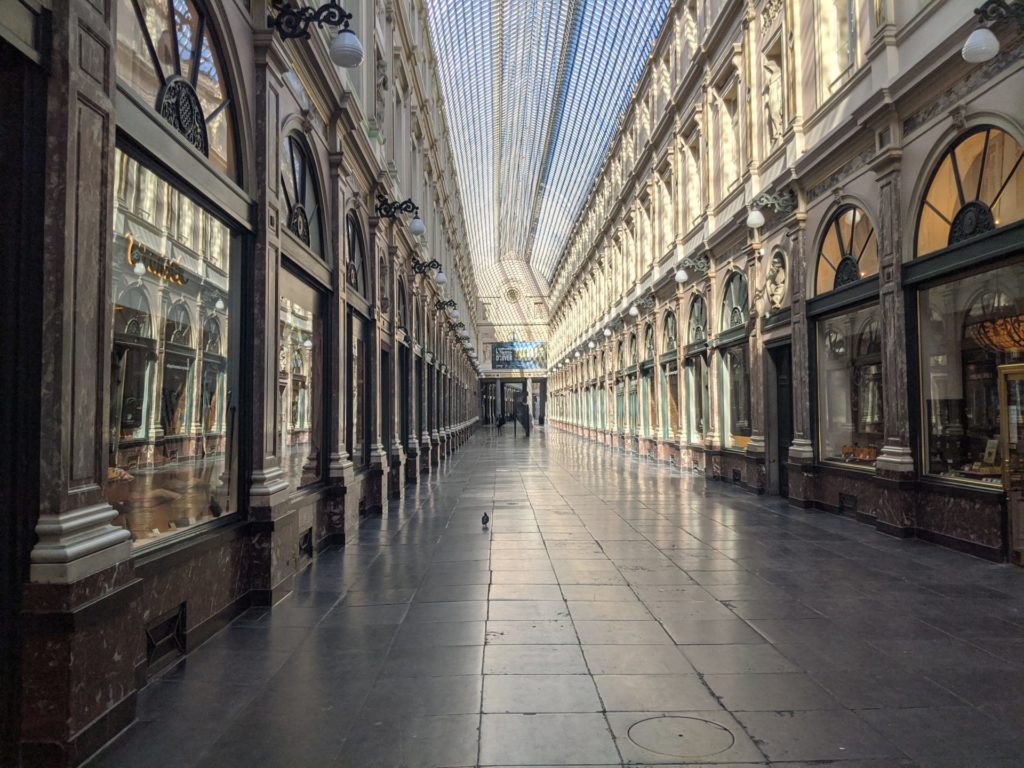BRUSSELS BEHIND THE SCENES
Weekly analysis and untold stories
With SAMUEL STOLTON
Other Brussels behind the scenes stories:
Brussels is not a city of solitude
In Brussels, a sneeze tells a different story
An EU ‘four-shirter,’ for the wrong reasons
Europe: An unpeopled world, a silent beauty
A spectre is haunting Europe – a spirit that dissolves the streets into spaces of absence, eroding the everyday sign and semblance of human residence. As we speak, Europe is transforming into an evacuated theatre, a deserted fairground, an unpeopled world.
From Madrid’s Gran Via to Cour Napoléon square in Paris, from St Peter’s piazza in the Vatican to Brussels’ Galeries Royales Saint-Hubert, the continent is emptying out. Europe is becoming a hollow land.
That which remains is a vast landscape of intellectual and cultural history - a prodigious but abandoned work of art, a silent beauty. We are in the midst of the most perilous threat to Europe’s population since World War II.
Sent out every Friday afternoon, BRUSSELS BEHIND THE SCENES brings the untold stories about the characters driving the policies affecting our lives. Analysis not found anywhere else, The Brussels Times' Samuel Stolton helps you make sense of what is happening in Brussels.
If you want to receive Brussels behind the scenes straight to your inbox every Friday, subscribe to the newsletter here.
Following Belgium Prime Minister Sophie Wilmès’ establishment of measures that oblige the country’s population to remain at home, I have found the experience to be wholly contradictory to one’s natural impulses for human social interaction. Staying inside has been laborious, a dream-like and vacuous practice. We have been consigned to a substance-less existence, as we migrate our everyday lives to the digital domain.
Rightly or wrongly, this is a province of which I cannot myself dwell. Often calls of escape rebound on the underside of my mind and the voices that speak oblige me with their enchanting whims of freedom and flight, to abscond this self-imposed penitentiary.
It is just past midnight on Thursday evening. I am standing in the middle of Schuman Roundabout - a place that has come to symbolise the frenzied, dizzying and fanatical nature of EU policymaking. I stare up at the vast and imposing structure of the Berlaymont building, with its colossal steel beams and vicious, sterile glass façade.
It is a terrifying construction, a building that petrifies if stared at for too long. At this hour, in this context, the Berlaymont is no more than a dead echo, reverberating silently in the middle of a dead city.
This is not merely due to the lateness of the hour. The distinction between the quiescence of the night and the rage of the working day has been diminished. It appears now that the Berlaymont and many other houses of EU bureaucracy will be relegated to a stock of derelict depots, with thousands of EU staff now obliged to work from home.
As a result, buildings such as these temporarily become relics of what once was – a grand and buoyant flowering of European political unity – something that, amid the current ‘end-time’ narrative, is being challenged, after certain countries earlier this month adopted export bans on supplies of vital medical equipment.
BRUSSELS BEHIND THE SCENES POWERED THIS WEEK BY
At my feet, a huge rat scuttles past, desperately trying to scout out scraps of food. For him, this unpeopled world is even harsher than the one that had come before. He will have to adapt and become more resourceful, accepting that the throwaway culture of Western late-capitalism is currently on hold.
Nature has an uncanny way of telling us things. Venice canals have become populated with ballets of swans floating on calm waters, and the thick, syrupy smog clouds have dispersed over the skies of China – revealing clear and boundless blue skies.
In Brussels, on many occasions for the first time, neighbours are greeting one another across balconies – knitting a new culture of social interaction, void of physical contact but fuelled by an appetite to talk to one another in the physical domain, to have some sort of a sense of normality, of what once was.
The rat is tireless in his pursuit of something to eat. I take out a candied mint from my jacket pocket and throw it to him. He stops for a moment and inspects the item. He sniffs at it and turns around madly, as if overcome by a fit of pleasure. The harsh light of the street lamp exposes the rat’s singular presence in this vacant realm. Without even the slightest modicum of noise, it proceeds to lick the sugared coating of the sweet, with the delicate tongue of a food connoisseur.
This animal will have a tough time over the coming weeks. At some point, coronavirus will probably be the end of him. Regardless of whether or not rats are susceptible to the virus, the lack of nourishment will take its toll. Eventually, like thousands of us across Europe, the ramifications of the outbreak will impose themselves on his existence, and he will die a deserted, abandoned, and lonely death.
A bitter wind throngs around the circumference of the Schuman roundabout. Staring down at this tormented and doomed creature, I can’t help but think which has been the real plague on this world: the coronavirus, or us?
Sent out every Friday afternoon, BRUSSELS BEHIND THE SCENES brings the untold stories about the characters driving the policies affecting our lives. Analysis not found anywhere else, The Brussels Times' Samuel Stolton helps you make sense of what is happening in Brussels.
If you want to receive Brussels behind the scenes straight to your inbox every Friday, subscribe to the newsletter here.


